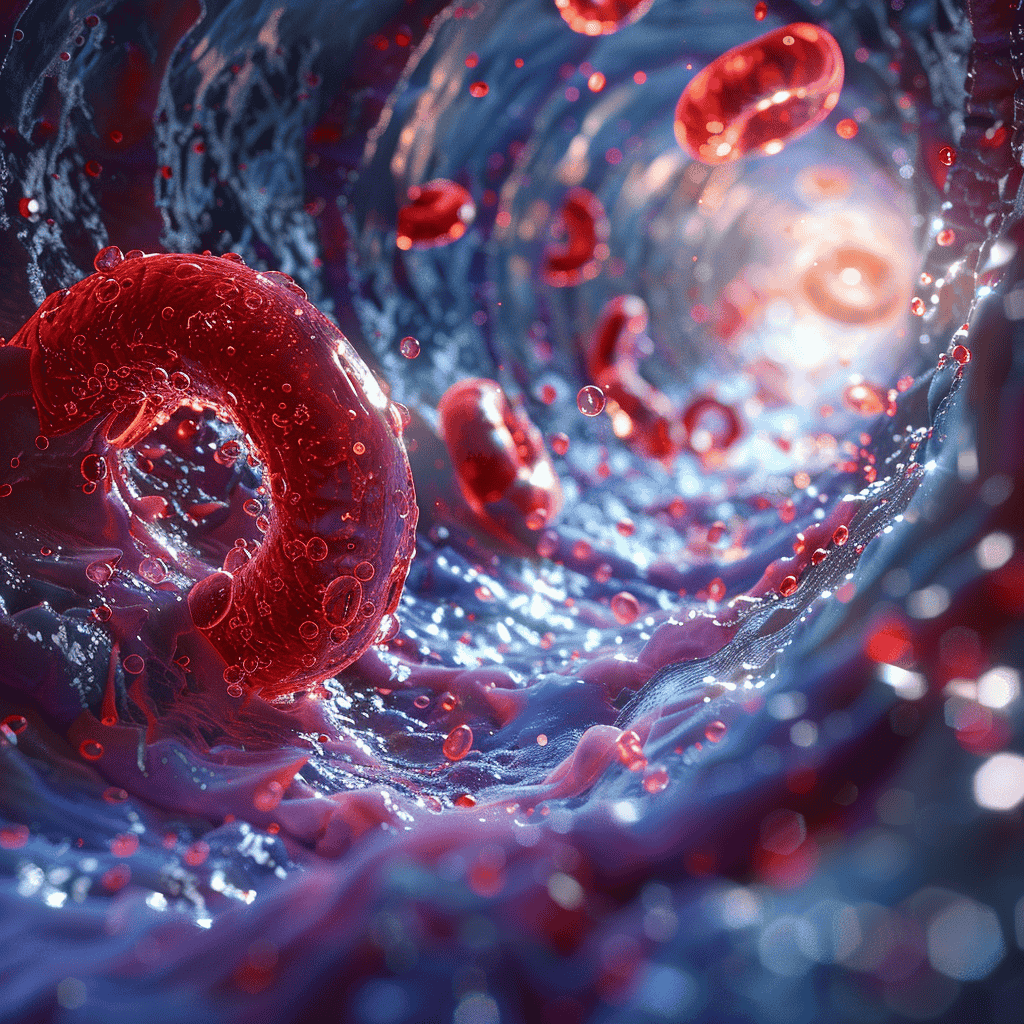Yip, read on to find out why and how I need to remove 150000 pieces of microplastic from my body.
Earlier this summer I was invited by the CEO of Plastictox (the world’s first and only commercial blood test for microplastics) to have my blood tested for microplastics and, as the title gives away, the test results revealed the presence of three microplastic particles per millilitre in my blood – translating to an estimated 150000 nanoparticles of plastic in my body… wait, what, I hear you shout!
Being told that this was actually within the normal (or the new normal) amounts did nothing to alleviate my shock (was I really that shocked though?) and my disappointment. Although I have been writing (recent blog on #PlasticFreeJuly) about plastic pollution and I am generally more aware of the sources and risks, I had hoped that I would be clear. In truth, however, the results were not unexpected. Despite making some changes, my exposure to plastic is still high (as is most likely yours) and in this blog, I am going to go into detail about why I had this pioneering test, how the microplastics most likely entered my body, what risks this brings, and explain my strategy to detoxify my body and to prevent future contamination .
Why I Took the World’s First Commercial Microplastics Blood Test
A combination of curiosity and concern for my well being, fuelled by my increasing knowledge of plastic pollution and my promotion of #PlasticFreeJuly (if only my body was plastic free), propelled me to partake in the world’s first commercial microplastics blood test from Plastictox. I am not a stupid person, but I had for most of my life wilfully ignored my increasing use of plastic and I had not fully considered its impact on my health. But as my knowledge increased so did my fears. And those fears were justified. Having taken a blood sample and posted it to a lab in Amsterdam, I waited anxiously for the results. A few weeks passed and then the results were in.
My test result showed that I had 3 pieces of microplastic in my blood test, which consisted of a finger prick of blood, suggesting a concentration of 30 P/ml which extrapolates to 150000 pieces throughout my body.
That revelation is a tad unsettling, showcasing a considerable presence of microplastics in my body which is not that surprising when research indicates that microplastics ubiquitously permeate our environment and are increasingly detected within human tissues. A test in 2022 identified microplastics in the blood of 17 test subjects out off 22. (1).
Microplastics infiltrate our bodies in a multitude of ways
So, we know that our bodies are likely (it is estimated that only 20% of people are still plastic free) contaminated by microplastics, but what are the sources and the associated risks?
- Atmosphere: Microplastics are prevalent in the air we inhale, particularly in urban locales (2)
- Aquatic Sources: Both tap and bottled water constitute significant reservoirs of microplastic contamination with higher levels found in bottled water (3)
- Diet: Microplastics are detectable in seafood, salt, and even produce (4) . Even cans of soft drinks are lined with plastic.
- Textiles: Synthetic fibres from apparel substantially contribute to microplastic pollution (5)
Studies underscore the presence of microplastics across our environment, signifying extensive exposure risks.
Health Hazards Associated with Microplastics
But what are the risks?
While research is still emerging, microplastic contamination has been linked with a spectrum of health hazards, including:
- Inflammatory Responses: Microplastics can incite inflammation and immune responses.(6)
- Endocrine Disruption: Certain chemicals within microplastics may perturb hormonal functions.(6)
- Cellular Detriment: Microplastics can precipitate oxidative stress and cellular damage.(7)
- Cardiovascular Events: The presence of nanoplastics in blood has shown to increase the likelihood of a composite of myocardial infarction, stroke, or death from any cause (8)
Recent investigations suggest that microplastics can precipitate grave health concerns, although the protracted ramifications remain under scrutiny. However, I think we can all agree that having hundreds of thousands of pieces of plastic in our body doesn’t sound too healthy.
So how do we rid our bodies of these invaders?
Detoxing Microplastics
To rid my body of microplastics, I am adopting several strategies and you can also do these:
- Dietary Modifications: It’s more organic and whole foods to curtail microplastic ingestion. Less ready meals (how did we ever think microwaving food in plastic was healthy?).
- Increased Hydration: Consuming more filtered (sadly tap water is contaminated) water to flush toxins from my body.
- Augmented Fibre Intake: Consuming high-fibre foods to aid in the elimination of microplastics via the digestive tract. Inulin for the win. Adding 10mg per day to my diet has had a moving effect.
- Targeted Supplements: Utilising supplements known to bolster detoxification processes. I am personally taking N-Acetyle Cysteine (NAC) and probiotics.
- Regular Exercise: Engaging in physical activity to promote overall health and augment the body’s natural detox mechanisms. I’ve not been participating in intense exercise for the past year, as I sadly believe that I have Long Covid with even the lightest exercise significantly raising my heart rate. I have been sticking to Zone 2 workouts mostly, so I have to find an alternative way to sweat, and thankfully my gym has a sauna that I am aiming to use three times a week.
The efficacy of these methods in reducing and removing the microplastic burden within the body should be high, and hopefully, if I can consistently apply these strategies, I will be able to remove the unwanted plastic from my body. But like with plastic pollution in general, it’s not enough to remove what’s there, we also have to turn off the tap and reduce the amount we are potentially absorbing.
Preventative Strategies
To mitigate future contamination, I am adopting the following practices:
- Avoidance of Single-Use Plastics: Reducing dependence on disposable plastic products. This is a biggie. I’ve finally ditched Diet Coke for good (well, it’s Day 5). With even cans having a plastic inner lining (repeating this should you have missed this news first time), my consumption of Diet Coke has to end.
- Water Filtration: I’m going to budget the cost to install filters to my mains water supply to eradicate microplastics from drinking water.
- Selection of Natural Fibres: Opting for clothing made from natural materials rather than synthetics. I no longer wear polyester clothing or buy Gore Tex products. I wear mostly organic cotton, wool, and hemp products
- Policy Advocacy: Endorsing policies aimed at curtailing plastic production and pollution via this blog and my social channels.
- Empowering others: Progress on One Sky Collective is slow but with partners like City to Sea, I am still very confident that we can make a difference.
Get Tested and Join Me in the Fight Against Microplastics
Would you be inclined to discover/confirm whether microplastics are present in your blood? Would the results galvanise you to adopt changes to your lifestyle? Share your thoughts in the comments below.
The good folks at PlasticTox have kindly provided the code MICROPLASTICTEST for a $15.00 discount and free shipping on your microplastics test from Plastictox. Together we can detox our bodies of microplastic. I will be retesting my blood in two to three months to see if I have in fact been successful in my attempt to remove 150000 pieces of microplastic, and I’d love to hear how you get on.
And I am still on the hunt for support for One Sky Collective if you are a developer, a designer, or even a sugar daddy/mommy who wants to help empower people to reduce, reuse, recycle and generally live more sustainable lives.
Research
- https://www.sciencedirect.com/science/article/pii/S0160412022001258?via%3Dihub
- https://pubmed.ncbi.nlm.nih.gov/38787098/
- Occurrence of microplastics in commercially sold bottled water – PubMed (nih.gov)
- https://www.ncbi.nlm.nih.gov/pmc/articles/PMC7171031/
- https://www.sciencedirect.com/science/article/pii/S2405844021012081
- https://www.ncbi.nlm.nih.gov/pmc/articles/PMC10151227/
- https://pubmed.ncbi.nlm.nih.gov/39058145/
- https://www.nejm.org/doi/10.1056/NEJMoa2309822












